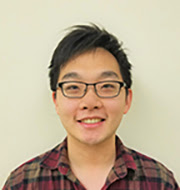Speaker: Shijun Sung
Affiliation: Ph.D. Candidate, UCLA
http://www.ee.ucla.edu/events/terahertz-imaging-and-sensing-for-ophthalmic-evaluation-of-corneal-edema-and-dystrophies/
Abstract: In the span of electromagnetic wave band from microwave to X-rays, the biological tissue-light interaction at the terahertz (THz) wavelength band (λ ~ 3mm – 30um) is particularly unique for two reasons. First, the THz band retains a large dielectric constant for water from the microwave region while having shorter wavelengths for imaging applications with < 1mm resolution. Second, scattering from typical soft tissue structures (cells, collagen matrix, etc.) is largely mitigated in the THz band, unlike in higher-frequency bands (IR band and up). Using this balance of properties, our study applies THz sensing to study diseases and conditions that compromise our body’s ability to balance water in tissues.
This study focuses on developing a new medical imaging technology using terahertz (THz) frequency wave for precise tissue water content measurement and imaging of cornea, which is a critical refractive and protective component of the eye. In ophthalmology, most corneal disorders such as Fuchs’ endothelial dystrophy (corneal hydration mal-regulation), keratoconus (irregularly shaped cornea), and pseudophakic bullous keratopathy (corneal graft rejection) result in corneal edema, leading to chronic vision impairment if left untreated. Reliable corneal tissue water content (CTWC) measurement can help with early diagnosis and intervention for corneal diseases and provide a better understanding of the formation, progression of corneal disorders.
This study developed a novel terahertz (THz) remote-sensing technique that measures absolute CTWC and have potential to be practically implemented in the clinical setting. The presentation will discuss development of a novel ophthalmic THz imaging system for completely non-contact, all normal incidence imaging of corneal surface. The imaging system employs wavelength independent quasioptical design that achieves 1.4 mm spatial resolution at 650GHz. THz corneal hydration sensing capability with this imager is demonstrated in in vivo rabbit model, showing onset of the acute corneal edema from endothelial damage, in the first THz imagery of living cornea ever captured. The imaging system is currently used in the initial clinical trial for healthy and diseased cornea of patients with corneal graft and corneal dystrophies.
Biography: Shijun Sung is a doctoral student working with Prof. Warren Grundfest on the development of terahertz (THz) imaging and sensing method for applications in medical imaging. Shijun completed his B.S., M.S. in Electrical Engineering at UCLA. His doctoral research focuses on novel quasioptical imaging system development for diagnostic imaging of corneal dystrophies.


No comments:
Post a Comment